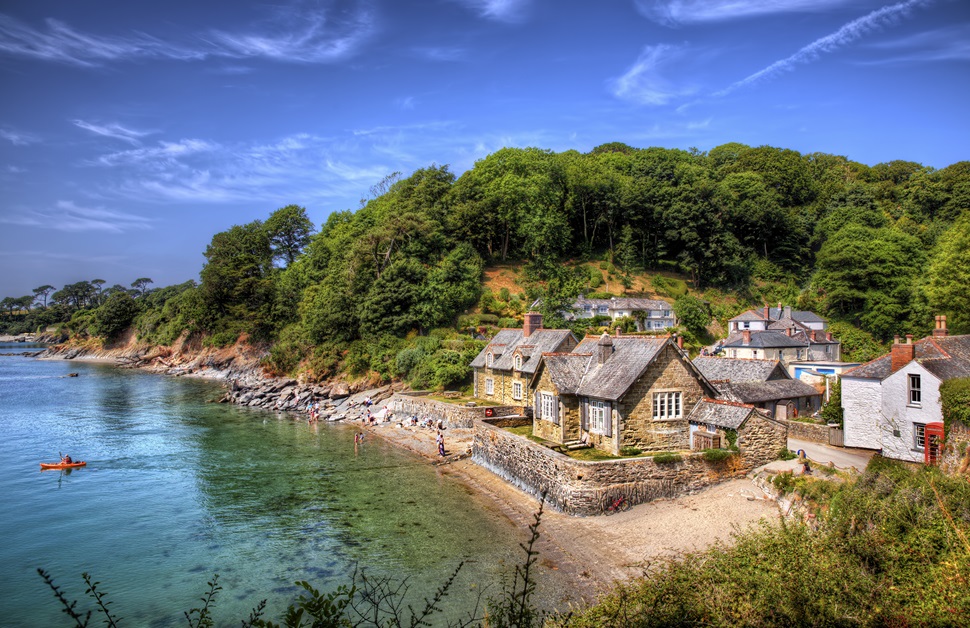Cornwall’s Rich Woodland Areas
With an estimated 56% of the population living outside of towns and 42% occupying rural settlements, Cornwall in South West England is seen as one of the country’s greenest counties. The UK government classified Cornwall as 92.02% rural, and a study back in 2010 found that 17% of the county’s land area was taken up by natural forest, amounting to as much as 51.1 kilo hectares.
Around 144 built-up areas appear across Cornwall, all with varying land areas, numbers of inhabitants and categories between towns, villages, cities or otherwise. The largest by population are Newquay, St Austell, Falmouth, Truro and Camborne. More trees are expected to be added to Cornwall’s total too, as the Back Garden Forest project intends to supply residents with a further 15,000 trees.
Between 2001 and 2023, the county lost an estimated 1.36 kilo hectares of tree cover. It has fluctuated since then, but with plans to encourage local residents to engage in tree-planting exercises and a growing number of incentives to retain and enhance the current state of the environment, it is likely that parameters protecting trees will, if anything, strengthen in the future.
In order to sufficiently cater to trees within a development site, the best course of action would be to book a British Standard tree survey and allow for an arboricultural consultant to provide accurate and impactful next steps. From there, you should see no issue in pleasing your local authorities and coming away with a successful application for planning consent.

Methods of Safeguarding Trees
Throughout Cornwall, the county council and all councils within are given responsibility to protect trees and issue adequate tree care to any trees under existing safeguarding measures. Although many different processes can be used to ensure the safety of trees, the two structured methods are through utilising conservation areas and Tree Preservation Orders (TPOs).
Each measure will see the affected tree requiring prior consent from the local council before any works are carried out. Lots of similarities exist between the two options and both are easy to navigate with the correct help, but a conservation area will apply to all trees inside of an outlined location and a Tree Preservation Order (TPO) is more focused on specific individual trees.
Present Authorities and Councils
- Caradon District Council
- Carrick District Council
- Cornwall Council
- Council of the Isles of Scilly
- North Cornwall District Council
- Penwith District Council
- Restormel Borough Council
Evaluation of Trees
In the majority of situations, the most suitable form of tree work will be to conduct a BS 5837 tree survey. It sees a tree consultant visiting the site to impose sufficient tree management by placing a grading over each and every present tree. Based on the condition and value of the trees, the grading will outline retained trees as well as any worthless or dangerous trees that need to be removed or destroyed. Tree removal can then take place, and if any value is lost, new trees can be planted as compensation.
It will be the duty of the arboricultural consultant to retain as many trees as possible, but if the new development disrupts the trees and nothing can be done to change the plans, the only outcome will be to remove the affected trees. A tree report will then be put together with all findings and solutions detailed, including information regarding root protection areas and Tree Constraints Plans (TCP), recommended tree works, and any other steps that will point the local planning authority in the direction of a granted planning application.
Request a Bespoke Quote for Your Site
You will find our arboricultural consultancy to be one of the best when it comes to high-quality BS5837 tree surveys and any other form of service involving trees, such as Tree Protection Plans (TPP), Arboricultural Impact Assessments (AIA), Arboricultural Method Statements (AMS) or tree risk assessments. With extensive experience in the arboricultural industry, our team are perfectly placed for conducting assessments and supporting planning applications.
For help with choosing the right British Standard tree surveys to suit your needs, reach out to our team and we can formulate a free quote using the specifications of your site and project. Choose between calling us, emailing us or visiting our contact page, and at this point, one of our team will be able to take down your details and assist you. We can then work with you to choose a day to inspect trees within your development site, provide you with adequate tree protection advice, and create a report worthy of seeing your planning application granted by the local planning authority.